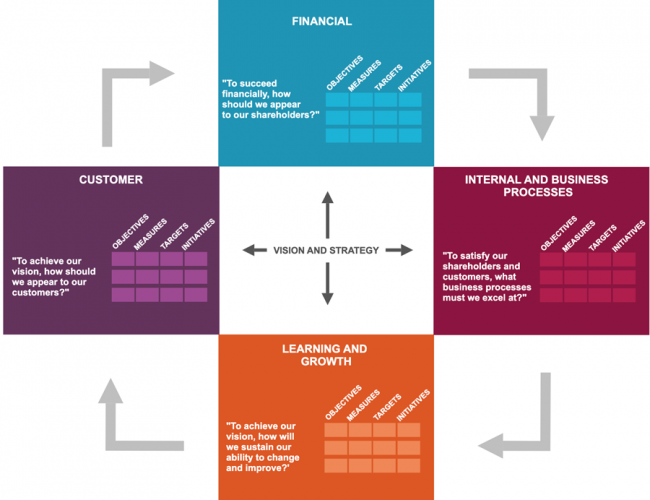
BALANCEDBALANCED SCORECARD
A Balanced Scorecard is a way to measure an organization’s performance and shows whether management is achieving desired results. The balanced scorecard is anchored on four perspectives, which include financial, business process, customer, and organizational capacity.
It is a Strategic planning framework that companies use to assign priority to their products, projects and services, Communicate about the targets and goals, and plan their routine activities. The Scorecard enables companies to monitor and measure the success of their strategies to determine how well they have performed. The Balance Scorecard acts as a Structured report that measures the performance of Company Management.
PERSPECTIVESPERSPECTIVES
Know what dictates our Actions and Company Culture.
The balanced scorecard is anchored on four perspectives, which include financial, business process, customer, and organizational capacity.
Integrity is paramount to us. We commit with integrity. We abide by the words given to you. So you stay rest assured of the quality work that is committed to you.
The methodologies that we follow are tried and tested. You are ensured the best practices to be followed so you receive the best outcomes.
Our team has been in this sector for over a decade now and know the market extremely well. So, with GHMC you are rest assured to be in the safest hands.
Our clients often say, GHMC is synonymous with trust and honesty. There are no veils and we are as you see us from day one till the project delivery.
WHYWHY WE?
Understand what makes us Special and Unique.
GHMC Private Limited stands apart as more than just a consulting company; we are your strategic partner committed to delivering precise solutions when you need them, precisely how you need them. Entrusting us with your Balanced Scorecard needs ensures the perfect alignment of services, timing, and cost-effectiveness.
It is also important to track quality and service in addition to tracking financial metrics. Too many companies focus exclusively on sales and expenses to the exclusion of other metrics.
Based on the strategy map prepared, we communicate priorities and goals to employees, customers, suppliers, and other stakeholders.
Enterprise goals and metrics are decomposed into business unit or departmental goals and metrics, enabling all stakeholders to understand how their projects and activities will contribute to overall enterprise success.
Our balanced scorecard facilitates business planning by providing clear metrics that help the enterprise rank projects into priority sequence and enterprise products by importance.
When these systems are error-prone or produce incomplete data, additional manual effort is required to collect the necessary data. Typically, the people affected waste time so much time arguing about whose data is correct, they lack the time to analyze the data and take corrective action.
Enterprises that are grounded in one of the STEM disciplines normally make decisions based on data and analysis. They are comfortable analyzing a comprehensive set of metrics that considers the same product or process from multiple perspectives.
In the absence of strong executive support, the necessary resources to collect and monitor the required information are unlikely to be available. Even if by some miracle all of the information could be collected, the executive team must use the balanced scorecard data or the rest of the enterprise will also ignore any corrective actions suggested by it. When this happens, the program will be neglected and eventually cancelled.
Appropriate metrics vary by industry and enterprise. While the balanced scorecard does not provide rigid rules regarding appropriate metrics, it is critical to select metrics that accurately support enterprise goals.
Four perspectivesFour perspectives
At GHMC, we understand the critical role, the Balanced Scorecard plays in achieving organisational Goal.
The Balanced Scorecard relies on four perspectives to monitor enterprise health. Specifically:
- Financial: The financial health of any enterprise is critical to long-term survival. Typical measures used by for-profit companies include revenue growth, operating income, return on equity, and other measures of interest to owners.
- Customer: The customer perspective compares the enterprise’s service to the competition’s service. Specific metrics vary by industry but most focus on time, quality, and service levels. Metrics common to most industries include customer satisfaction and enterprise responsiveness. Other metrics are more industry-specific. Cellular telephone companies track customer growth and churn. Manufacturing companies track on-time delivery, and percent of orders delivered as ordered (i.e. without back order or substitution). Consumer products companies monitor percent of repeat customers and percent of sales from products introduced in the past five years.
- Internal process: This perspective helps the enterprise understand the efficiency and effectiveness of internal business processes and supporting technologies. Many companies focus on the time to take an order, on-board a new hire, or complete other internal processes. Manufacturing companies often track setup time, cycle time, first pass yield, and the time to introduce a new product. Companies attempting to streamline internal processes track the percent of paperless processes and the number of self-service processes.
- Learning and development: This perspective is also called “Organization capacity” and is sometimes called “People” by enterprises that believe that humans are the most important part of an enterprise’s capacity to improve. This perspective considers the degree to which the enterprise can evolve and improve the way it supports its goals. Organization capacity monitors people, culture, organization, and the infrastructure to support them. Typical measures include employee satisfaction/engagement, time to hire, first-year turnover, regretted (sometimes unwanted) turnover, and training/education received.
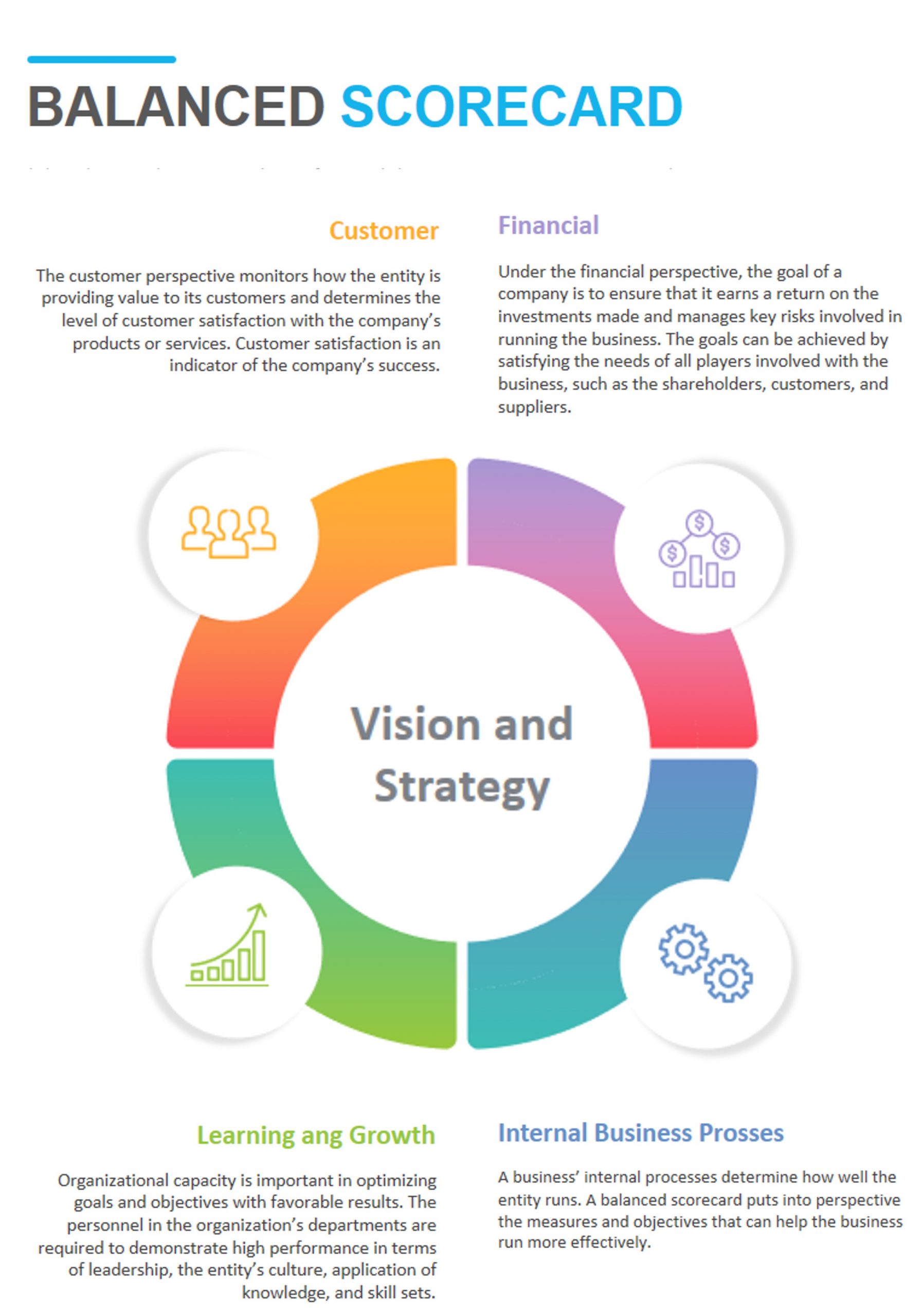
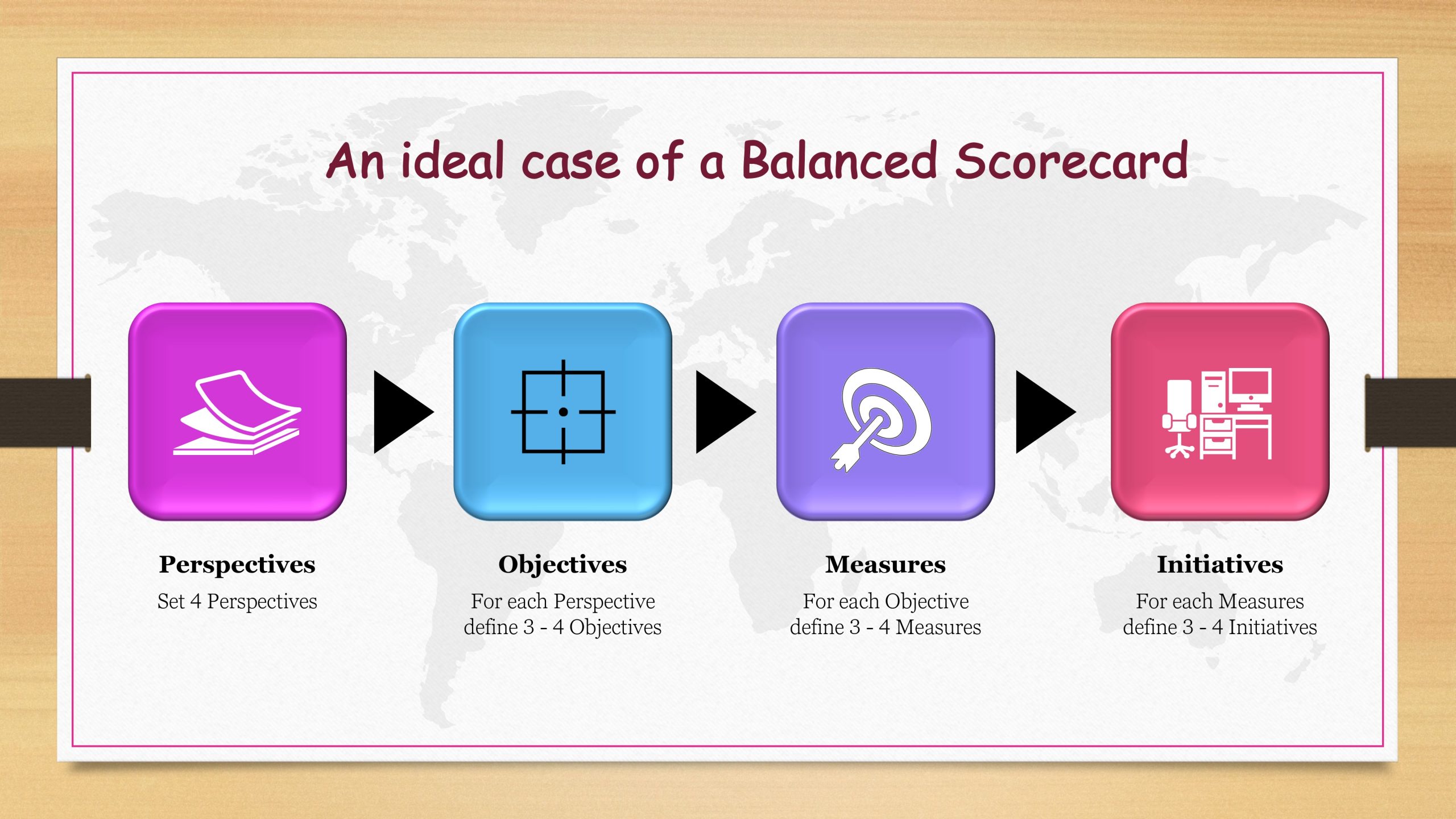
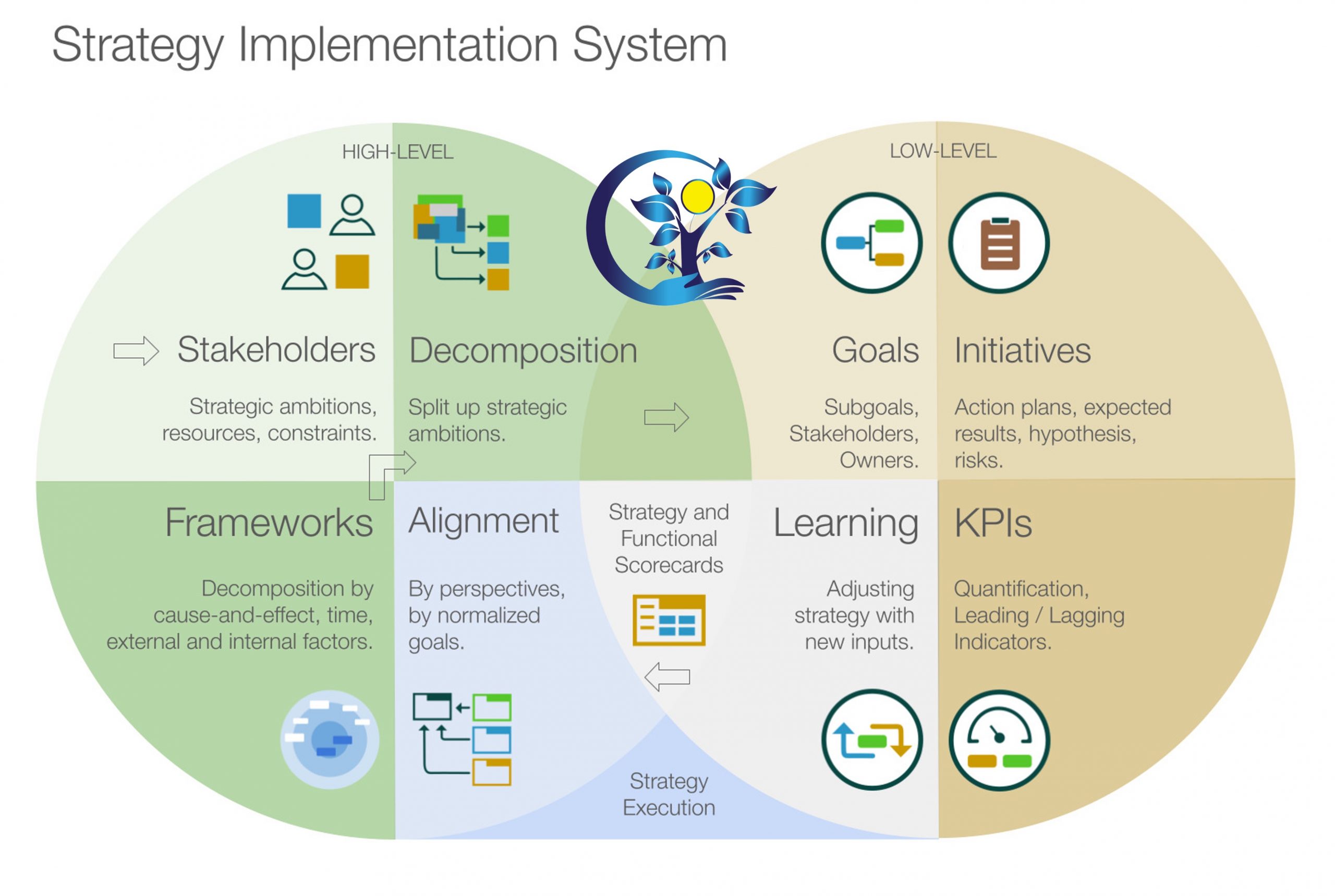
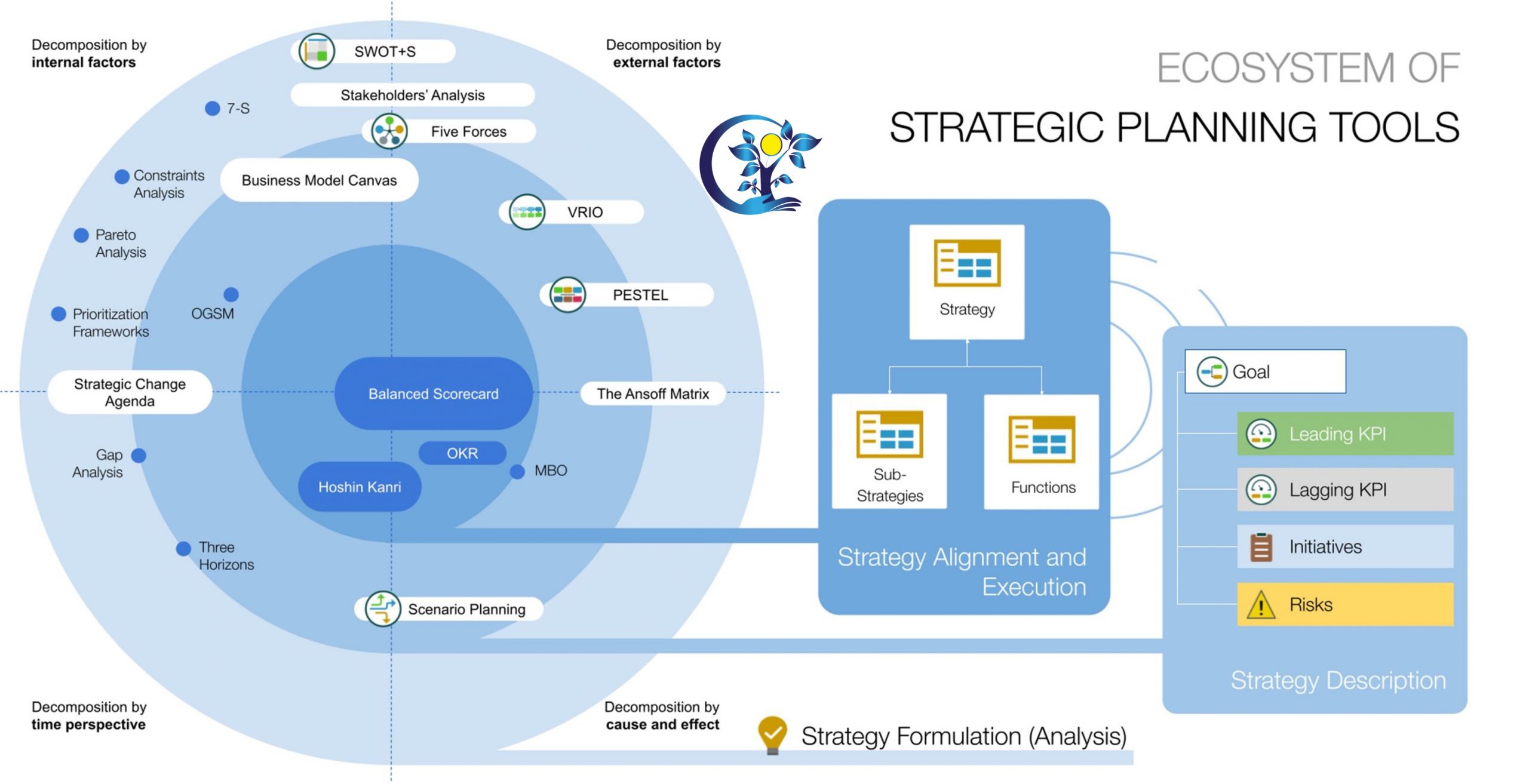
Draw a Balanced ScorecardDraw a Balanced Scorecard
Balanced scorecards are easiest to create using a template. Start with a space for all four perspectives and just add what specifically applies to your organization.
Determine the vision. The company’s main vision belongs in the centre of a balanced scorecard. Whichever part of your company you look at, you should always keep this goal or vision in mind.
Add perspectives. To create a traditional balanced scorecard, place the four perspectives in a ring around the central vision.
Add objectives and measures. Within each perspective define specific objectives, measures, targets, and initiatives.
Connect each piece. Link each perspective to the others using arrows to indicate that they’re all interconnected when it comes to achieving the company’s vision.
Share and communicate. Use the balanced scorecard to demonstrate how different initiatives and short-term actions are contributing to the long-term strategic objectives of the company.
